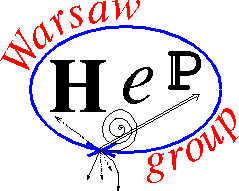SEMINARIUM FIZYKI WIELKICH ENERGII
Dnia 27 stycznia (piątek) o godzinie 10:15, w sali B2.38 odbędzie się seminarium, na którym zostanie wygłoszony referat pt.:
„The LUXE – Laser und XFEL Experiment-towards non-perturbative QED”
Referuje: dr hab. Grzegorz Grzelak (IFD UW)
The seminar will introduce LUXE, „Laser Und XFEL Experiment”, currently being developed at DESY in Hamburg, an experiment that aims to use the high-quality electron beam of the European XFEL facility and a high-power optical laser.
The scientific goal of the experiment is to study quantum electrodynamics in the largely unexplored territory, in the regime of strong fields, close to and beyond the Schwinger limit, revealing the non-perturbative face of QED and going beyond the formalism of linear equations of quantum electrodynamics.
The seminar will also introduce the experimental setup:
beam extraction from the European XFEL Linac, requirements for a high power laser and precise detectors optimized to measure electrons, positrons and photons including contribution to the experiment form the University of Warsaw.
Serdecznie zapraszamy
dr hab. Katarzyna Grzelak
prof. dr hab. Jan Królikowski
prof. dr hab. Aleksander Filip Żarnecki

